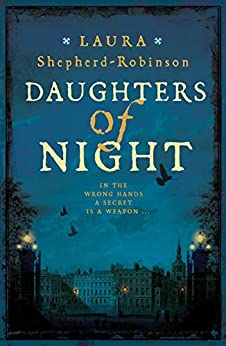Why a Booktrail?
1782: A woman seeks justice for someone London society would rather forget.

1782: A woman seeks justice for someone London society would rather forget.
Desperate for her politician husband to return home from France, Caroline ‘Caro’ Corsham is already in a state of anxiety when she finds a well-dressed woman mortally wounded in the bowers of the Vauxhall Pleasure Gardens. The Bow Street constables are swift to act, until they discover that the deceased woman was a highly-paid prostitute, at which point they cease to care entirely. But Caro has motives of her own for wanting to see justice done, and so sets out to solve the crime herself. Enlisting the help of thieftaker, Peregrine Child, their inquiry delves into the hidden corners of Georgian society, a world of artifice, deception and secret lives.
But with many gentlemen refusing to speak about their dealings with the dead woman, and Caro’s own reputation under threat, finding the killer will be harder, and more treacherous than she can know .
From 1785 to 1859, this site was one of the leading venues for public entertainment in London. The Gardens consisted of several acres of trees and shrubs with attractive walks. Initially entrance was free, with food and drink being sold to support the upkeep etc.
It was accessed by boat until the Vauxhall Bridge was built in the 1810s. It became the Vauxhall Gardens in 1785 and admission was charged . These attractions drew enormous crowds, and there were many ‘romantic assignations’ suspected too. Out of the attractions you could see were tightrope walkers, hot-air balloons, concerts and fireworks. It comes to life again right in this novel!
The Turkish tent
The “Turkish tent” became one of the Gardens’ structures, the interior of the Rotunda became one of Vauxhall’s most viewed attractions, and the chinoiserie style was a feature of several buildings. A statue depicting George Frideric Handel in the Gardens later found its way to Westminster Abbey. In 1817, the Battle of Waterloo was re-enacted, with 1,000 soldiers participating.
It closed in 1840 after its owners suffered bankruptcy, but re-opened in 1841. It changed hands in 1842, and was permanently closed in 1859. The land was redeveloped in the following decades, but slum clearance in the late 20th century saw part of the original site opened up as a public park. This was initially called Spring Gardens and renamed in 2012 as Vauxhall Pleasure Gardens. It is managed as a public park by the London Borough of Lambeth.
Vauxhall Gardens is depicted in a tile motif at Vauxhall tube station by George Smith.[1]
Destination/location: London Author/guide: Laura S Robinson Departure Time: 1712
Back to Results1910. 1970s :In the middle of a severe storm two sisters rescue a mysterious man from a shipwreck.
Read more